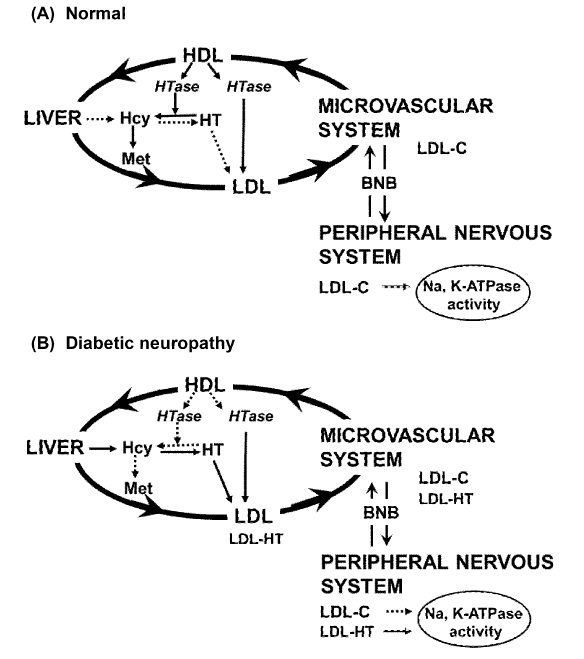
Under normal conditions, most, but not all, of homocysteine (Hcy) is converted into methionine. Excessive amounts of Hcy-thiolactone (HT) are eliminated from the circulation immediately, and are metabolized by HTase, which detoxifies the HT.
Under diabetic conditions, however, excessive Hcy is produced and converted to HT, which appears in the circulation. Decreasing HDL-cholesterol (HDLC) levels reflect an equivalent lessening of the HDL-related enzyme, HTase. The decreased amount of HTase allows LDL proteins to undergo N-homocysteinylation. HT-modified LDL in circulation attacks the microvasculature and invades the peripheral nervous system through the blood nerve barrier (BNB). Eventually, the circulating HT-modified LDL shows neurotoxicity through suppression of Na, K-ATPase activity in myelin-making Schwann cells. Thus diabetic neuropathy develops with a reduction of normal membrane potential. Keen arrows indicate direction of flow of cholesterol transport system. Line arrows indicate stimulation of enzyme activity, metabolite production, or oxidized modification. Dotted line arrows indicate suppressions of enzyme activity, metabolite production, or oxidized modification.